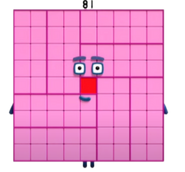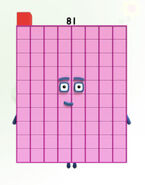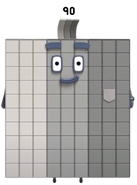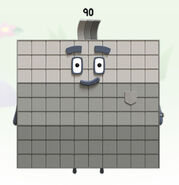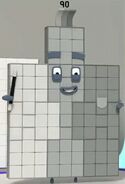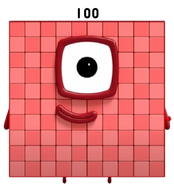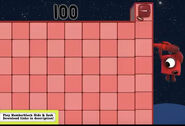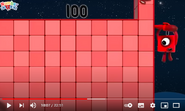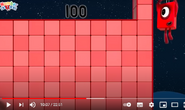Arrangements, also called Shapes, or Forms, are when the Numberblocks switch shapes. For instance, Four is mostly seen as a 2 by 2 square, but he occasionally appears as a tower (1x4) or other shapes. This page lists out all the arrangements as seen in the official show (and other official content such as apps or social media).
Rules[]
Please read before editing this page!
- Face placement doesn't matter if they're facing the same direction relative to the shape. Remember, the only thing that matters is the shape and direction. Same applies to Numberblocks without a face.
- Direction does matter. That means 1x8x1, 8x1x1, and 1x1x8 count as different arrangements.
- Colour placement doesn't matter either. For example, a square Nine with its colours going horizontally has the same arrangement as its colours going vertically. Same applies to Numberblocks which differ from the usual colour scheme (e.g. the blue Eleven that appears when Twenty-Two splits in half).
- Same thing applies to compound Numberblocks, unless you're talking about their components.
- Same also applies to the "Ten Borders" (the thick border to group ten blocks for larger numbers)
- Please do not attempt to remove the sub-sections on certain Numberblock's sections, such as Four or Five.
- Do not attempt to remove the scrollboxes, either.
- Some Numberblocks can make shapes that are not made out of cubes. Those go in the “Other Shapes” category.
- Some Numberblocks can make (or have made) shapes that are separated, and thus do not count as polynominoes. Those go in the “Separated” category.
- The space between two separate blocks (the row with no blocks) is denoted by "+0".
- Make sure your picture is from official content (episodes, promo vids/pics, and books/magazines). This rule is extremely important: you could end up getting a strike if you add a shape that you made yourself.
- If it's bolded then that means the arrangement requires precise timing (i.e. they could only be seen on one or two frames in the process of changing shape). If it's italicized the picture was rotated.
- Don't add codes unless you know what you're doing. If you want to learn how to use the code CORRECTLY, look for TSRITW’s tutorials down in the comments or in one of his blog posts.
- Do not add sections for Numberblocks that only appeared in one episode with one arrangement, like Forty-One or One Thousand.
- Do not add Numberblocks that haven't appeared yet either. Only add them after their debut episode aires properly.
- If a Numberblock bigger than 10 can be separated into with a straight line and , it counts as a "X Tens and Y" shape and should be named so, along with the other name.
FYI, this is what the "X Tens and Y" shapes mean. So 11 is "Ten and One", 12 is "Ten and Two", 21 is "Two Tens and One" and so on.
- For example, the compound Twenty-One in I Can Count to Twenty should be named "Two Tens and One", or "Twenty and One".
- The "Tens and Ones" shapes also apply to those folded (i.e. 5 blocks tall). These should be called "X Tens and Y Low".

This is an example of a "Low X tens and Y" arrangement.
- Arrangements only seen as a compound go into the "Compound Only" subsection of the figured-out Numberblock's section.
- Sometimes, multiples of Ten (10) can rearrange while being a part of a Compound Numberblock. They go into the "Component Only" subsection.
- Don't add them if they are seen independent.
- Diagonal shapes are not counted as separate arrangements. They are actually a rotated version of the arrangement.
- It's okay to add split-second arrangements. Just make sure that they're not split-second separated arrangements. They should be stable and be seen for at least 5 frames.
- Do not add Arrangements with the wrong number of blocks.
How do I read arrangement codes?[]
Arrangement codes is a systematic way of describing how a Numberblock's blocks are arranged, using a string composed of numbers, letters and symbols. Below shows the full list of components in an arrangement code.
| component | meaning | Example | arrangement code |
|---|---|---|---|
| blocks arranged horizontally (sideways). | 
|
(or ) | |
| Rectangle with a width of and a height of . In other words, y layers of x. For example, Eight's default arrangement is two blocks wide and four blocks tall, or in code notation . | 
|
||
| all blocks aligned to the LEFT | 
|
||
| all blocks aligned to the RIGHT | 
|
||
| all blocks aligned to the CENTER | 
|
||
| Centered, but slightly to the left | 
|
||
| Centered, but slightly to the right | 
|
||
| means the leftmost block is at column n. The letter "c" MUST be lowercase. | 
|
||
| One block is skipped. | 
|
||
| blocks are skipped. | 
|
||
| rows are skipped (i.e. they have no blocks). Omit if . | 
|
||
Three Dimensions[]Everything is same as two-dimensional blocks, but with these new rules added for the 3rd dimension: | |||
| A solid cuboid with a width of '''x''', a height of '''y''', and a depth of ''z'' (3D shapes only). In other words, '''z''' 3D layers of '''x×y'''. Omit z if , since that would only be a single layer. | 
|
||
| Move one layer back (for 3D blocks), and x blocks to the right and y blocks above the top block of the left-most column of the previous layer. You may omit the only if . | 
|
||
| Same as the rule above, but move layers back instead of one. (which means layers are skipped) | |||
Oh, the shapes the Numberblocks could make![]
Zero (0)[]
One (1)[]
Two (2)[]
Three (3)[]
One, Two, Three, Look at me! Three has 6 2D arrangements: horizontal, vertical, 1L+2, 2+1L, 1R+2, and 2+1R.
2D (6/6)3D (2) |
Four (4)[]
Four can be arranged vertically or in a square. He can also be horizontal, L/J-shaped, S/Z-shaped, Bolt-shaped, or T-shaped.
2D (19/19)I-TetraminoesJ-TetraminoesL-TetraminoesO-TetraminoesS-TetraminoesT-TetraminoesZ-Tetraminoes3D (2) |
Five (5)[]
Five is usually seen arranged vertically, but she can also be arranged 1R+2+2. She can also make a few other arrangements out of all.
2D (43/63)I-PentaminoesF-Pentaminoesꟻ-PentaminoesJ-PentaminoesL-Pentaminoesꟼ-PentaminoesP-PentaminoesN-PentaminoesИ-PentaminoesT-PentaminoesU-PentaminoesV-PentaminoesW-PentaminoesX-PentaminoesY-Pentaminoesγ-PentaminoesS-PentaminoesZ-Pentaminoes3D (4) |
Six (6)[]
Six is seen arranged vertically or as 2x3 block. she can also be a 3x2, or triangular.
2D (63/216)3D (1) |
Seven (7)[]
Seven is seen vertical, horizontal, or 1R+2x3. Lucky!
2D (69/760)Independent (67)Component Only (2)3D (1) |
Eight (8)[]
Octoblock Rearrange! Eight is seen vertical, but he is mostly 2x4. He can be horizontal, 4x2, 2L+3x2, a square with a hole and other shapes. He is the first Numberblock to make 3D shapes. He also has the most 3D arrangements out of any Numberblock.
2D (119/2,725)Independent (117)Component Only (2)Separated (2)3D (6) |
Nine (9)[]
Nine, just like Four, can be a square, but he frequently sneezes at this shape, making him split into Eight and One. To prevent that, 9 can also be vertical, 1R+2x4, or horizontal. He can make 1,285 different shapes, and has 9,910 different arrangements.
2D (83/9,910)Independent (82)Component Only (1)3D (2) |
Ten (10)[]
Ten can make an assortment of shapes. She can be vertical. She can also be a 2x5, 5x2, triangular or horizontal. She can also make more than 30,000 other shapes.
2D (120/36,446)3D (2) |
Eleven (11)[]
Eleven can be seen vertical, horizontal, or 1R+2x5.
2D (34/135,268) |
Twelve (12)[]
Because of Twelve's array display, she can make different rectangular arrays: vertical, 2x6, 3x4, 4x3, 6x2, or horizontal. She can also make a bunch of other shapes.
2D (97/505,861)3D (1) |
Thirteen (13)[]
It is debatable whether Thirteen (don't say it!) has a default arrangement, as his arrangement changes almost every episode he appears in. However, his three most common arrangements are 2R+3+(2x4)L, 1R+3x4, and (2x2)L+3x3.
2D (43/1,903,890) |
Fourteen (14)[]
Extreme Fourteen is usually seen as 2x7 or Ten and Four.
2D (29/7,204,874) |
Fifteen (15)[]
Hush, hush. Fifteen is most commonly seen as a step shape, occasionally as 3 by 5, and rarely other shapes.
2D (50/27,394,666) |
Sixteen (16)[]
Square Party! Just like One, Four and Nine, Sixteen can be a square.
2D (61/104,592,937) |
Seventeen (17)[]
Seventeen is usually seen as a "rectangle with a hat".
2D (35/400,795,844) |
Eighteen (18)[]
Because of Eighteen's array display, he can make different rectangular arrays: vertical, 2x9, 3x6, 6x3, 9x2, or horizontal. He can also make a bunch of other shapes.
2D (78/1,540,820,542)3D (1) |
Nineteen (19)[]
Nineteen can make lots, AND LOTS of crazy shapes. Out of all the Numberblocks, she has made the most arrangements.
2D (131/5,940,738,676)3D (1) |
Twenty (20)[]
Twenty is ten twos, but has over 11,000,000,000x more possible arrangements than Two has!
2D (79/22,964,779,660)Independent (23)Component Only (56)3D (2) |
Twenty-One (21)[]
Number Explorer Twenty-One is the smallest number that first appeared as a compound. She is usually seen as 3x7 or a staircase shape with six steps.
2D (52/88,983,512,783)Figured-Out (43)Compound Only (9) |
Twenty-Two (22)[]
Twenty-Two is two football teams. Other than his "Two Tens and Two" forms, he has only made vertically symmetrical arrangements, allowing him to split into two Elevens from the middle.
2D (15/345,532,572,678)Figured-Out (10)Compound Only (1)Faceless (4) |
Twenty-Three (23)[]
Twenty-Three is happy being two tens and three. That is his only (figured-out) arrangement seen in the show. (The others are from apps, magazines, and exclusive clips)
2D (28/1,344,372,335,524)Figured-Out (9)Compound Only (19) |
Twenty-Four (24)[]
Super-Duper rectangle Twenty-Four can make different rectangular arrays: vertical, 2x12, 3x8, 4x6, 6x4, 8x3, 12x2, or horizontal. She can also make a bunch of other shapes.
2D (52/5,239,988,770,268)Figured-Out (33)Compound Only (19)3D (1) |
Twenty-Five (25)[]
Twenty-Five, just like One, Four, Nine, and Sixteen, she can be a square.
2D (10/20,457,802,016,011)Figured-Out (6)Compound Only (1)Faceless (3) |
Twenty-Six (26)[]
Agent Twenty-Six is usually seen as a 4x6 rectangle with a two on top. He can also make a bunch of other shapes out of all.
2D (14/79,992,676,367,108)Figured-Out (5)Compound Only (9) |
Twenty-Seven (27)[]
Twenty-Seven is a Super Cube! She is the smallest Numberblock whose main arrangement is three-dimensional.
2D (9/313,224,032,098,244)Figured-Out (7)Compound Only (2)3D (2) |
Twenty-Eight (28)[]
Pattern pioneer Twenty-Eight has her "tower with windows" arrangement as her main one, but she often appears as 4x7 or a step shape.
2D (20/1,228,088,671,826,973)Figured-Out (14)Compound Only (3)Faceless (3) |
Twenty-Nine (29)[]
29.
2D (7/4,820,975,409,710,116)Figured-Out (6)Compound Only (1)3D (1) |
Thirty (30)[]
====2D (19/18,946,775,782,611,174)====
Independent (11)Component Only (8) |
Thirty-One (31)[]
Thirty-One's main arrangement his calendar arrangement, and it is his only (figured-out) arrangement seen in the show.
2D (21/74,541,651,404,935,148)Figured-Out (5)Compound Only (14)Pattern Wall (2) |
Thirty-Two (32)[]
Doubler Thirty-Two is mostly seen as a 4x8 rectangle.
2D (21/293,560,133,910,477,776)Figured-Out (11)Compound Only (5)Pattern Wall (5) |
Thirty-Five (35)[]
Thirty-Six (36)[]
Puzzle Master Thirty-Six is mostly seen as a 6x6 square or a step shape.
2D (17/71,242,712,815,411,950,635) |
Forty (40)[]
Forty-Five (45)[]
====2D (13/17,244,800,728,846,724,289,191,074)====
|
Forty-Nine (49)[]
Fifty (50)[]
Fifty-Five (55)[]
Starship explorer Fifty-Five is mostly seen as a rocket ship, but he also occasionally appears as a step shape or in a 5x11 rectangle.
2D (16/17,326,987,021,737,904,384,935,434,351,490) |
Sixty (60)[]
Sixty is six tens. She can make 12 rectangles, which is twice the requirement for being a Super Rectangle!
2D (9/) |
Sixty-Four (64)[]
Seventy (70)[]
Eighty (80)[]
====2D (9/)====
Spidoctoblock ((2[>4]2)C+((1[>6]1)x2)C+1[>]1[>2]2[>2]1[>]1+1[>]8[>]1+1[>4]2[>4]1+12+2C+10C+(1[>3]2[>3]1)C+1[>]6[>]1+((1[>]1[>4]1[>]1)x2)C+((1[>4]1)x4)C) |
Eighty-One (81)[]
Ninety (90)[]
One Hundred (100)[]
See also[]
Sequence A001168 in the OEIS - Number of fixed polyominoes with a given number of cells, or the number of two-dimensional arrangements Numberblocks can make.


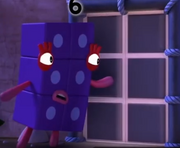
























![{\displaystyle [>]}](https://services.fandom.com/mathoid-facade/v1/media/math/render/svg/4938ce76abafe8001886b3b2fd302764b119b8e5)
![{\displaystyle 3+1{\underline {[>]}}1+3}](https://services.fandom.com/mathoid-facade/v1/media/math/render/svg/30853332bfe015f6ced1fdca52f3bcf913a66eb5)
![{\displaystyle [>n]}](https://services.fandom.com/mathoid-facade/v1/media/math/render/svg/0b9bc99f57d0e9cda7dbe43eddb4f1ac7fceaf9d)
![{\displaystyle 1{\underline {[>2]}}1+4}](https://services.fandom.com/mathoid-facade/v1/media/math/render/svg/a38414d8da4008529b98d9dfe4ad3ccd5de53b4e)
![{\displaystyle [nY]}](https://services.fandom.com/mathoid-facade/v1/media/math/render/svg/f9fdbc0ff00d8adaccdb958e9a976391b54e9725)

![{\displaystyle 3+1R+2R+1C{\underline {[Y]}}1C}](https://services.fandom.com/mathoid-facade/v1/media/math/render/svg/f4d12f1ff215d1dd1a595261fad100de419b0631)



![{\displaystyle [B(x,y)]}](https://services.fandom.com/mathoid-facade/v1/media/math/render/svg/1fa020f2a84e444beb906bdfd29dc9988d4f5146)


![{\displaystyle 1\times 2{\underline {[B(0,5)]}}\ 1\times 6}](https://services.fandom.com/mathoid-facade/v1/media/math/render/svg/d1dabc0ea42ad0741b5b51dab0d65c2150b324eb)
![{\displaystyle [B(x,y,z)]}](https://services.fandom.com/mathoid-facade/v1/media/math/render/svg/3d4be8b16d437460cbb7446ba94c464843523c00)


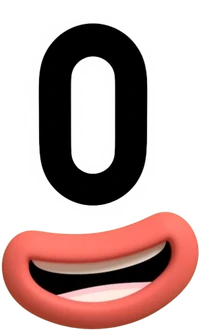

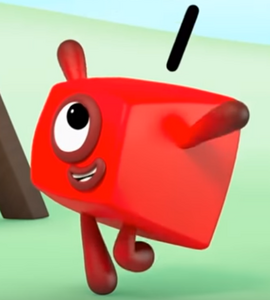

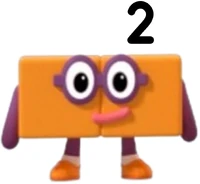
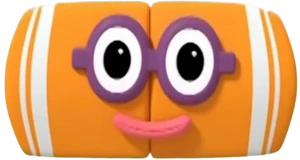

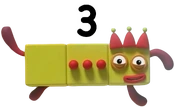
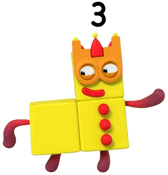
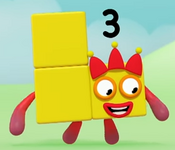
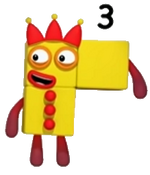
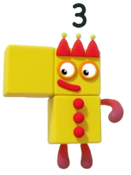
![9063F0C6-3BDA-4D6D-A2AE-411C4CB6FB38.jpeg (252 KB) Slanted / Backward Odd Block / Step Stool 3 (1[B(0,1)]1x2)](https://static.wikia.nocookie.net/numberblocks/images/a/a6/9063F0C6-3BDA-4D6D-A2AE-411C4CB6FB38.jpeg/revision/latest/scale-to-width-down/153?cb=20181119064948)
![Anotherthreedarrangementaaa.PNG (79 KB) Flat Triangle (2[B]1)](https://static.wikia.nocookie.net/numberblocks/images/8/87/Anotherthreedarrangementaaa.PNG/revision/latest/scale-to-width-down/185?cb=20210827054633)



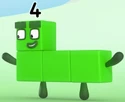

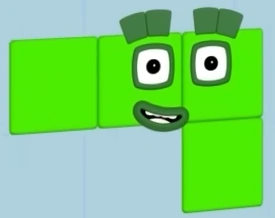

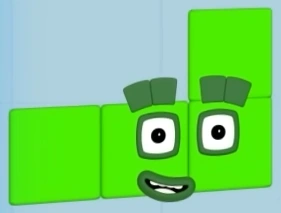

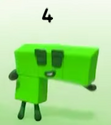



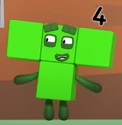


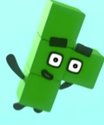



![4pyramiddddd.png (63 KB) Tetrahedron (1[B(-1,-1)]1R+2)](https://static.wikia.nocookie.net/numberblocks/images/7/72/4pyramiddddd.png/revision/latest/scale-to-width-down/120?cb=20210607102050)

















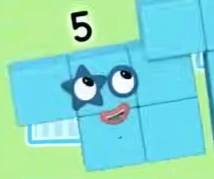






![UshapeFive.JPG (14 KB) U-shape (1[>]1+3)](https://static.wikia.nocookie.net/numberblocks/images/8/86/UshapeFive.JPG/revision/latest/scale-to-width-down/100?cb=20190108180046)

![5U-Upsidedown.jpg (16 KB) (3+1[>]1)](https://static.wikia.nocookie.net/numberblocks/images/b/bf/5U-Upsidedown.jpg/revision/latest/scale-to-width-down/100?cb=20240303093937)
















![3d.png (81 KB) Sideways Gamma Front (1x2[B]1x1x3)](https://static.wikia.nocookie.net/numberblocks/images/e/e8/3d.png/revision/latest/scale-to-width-down/89?cb=20181127150931)
![5in3d.PNG (150 KB) Pyramid (1R+2[B(0, -1)]2)](https://static.wikia.nocookie.net/numberblocks/images/8/8c/5in3d.PNG/revision/latest/scale-to-width-down/100?cb=20210827054634)
![3dimensional52.PNG (30 KB) Flipped Pyramid (2+1R[B]2)](https://static.wikia.nocookie.net/numberblocks/images/9/93/3dimensional52.PNG/revision/latest/scale-to-width-down/100?cb=20210827054633)
![3dimensional51.PNG (30 KB) Long Axis ((1x2)L+2[B(0, -2)]1)](https://static.wikia.nocookie.net/numberblocks/images/a/a3/3dimensional51.PNG/revision/latest/scale-to-width-down/76?cb=20210827054631)










![Screenshot 20180928-161102.png (48 KB) Micro Symbol / μ-shape (1[>]1+3+1L)](https://static.wikia.nocookie.net/numberblocks/images/d/df/Screenshot_20180928-161102.png/revision/latest/scale-to-width-down/90?cb=20181117111802)








![SixSwingset.PNG (187 KB) J-shape (1R+1[>]1+3)](https://static.wikia.nocookie.net/numberblocks/images/0/05/SixSwingset.PNG/revision/latest/scale-to-width-down/90?cb=20181130073903)












![-1-1CL-1-1R+4.PNG (261 KB) Lopsided F ((1[>]1)R+4)](https://static.wikia.nocookie.net/numberblocks/images/b/bb/-1-1CL-1-1R%2B4.PNG/revision/latest/scale-to-width-down/90?cb=20190121172744)
![1-2-1+4.PNG (262 KB) U-shape (1[>2]1+4)](https://static.wikia.nocookie.net/numberblocks/images/6/68/1-2-1%2B4.PNG/revision/latest/scale-to-width-down/90?cb=20190121172848)







![6sater5.PNG (39 KB) Long S (3+1[>]1+1L)](https://static.wikia.nocookie.net/numberblocks/images/4/4b/6sater5.PNG/revision/latest/scale-to-width-down/74?cb=20210614133911)




















![6U-upsidedown.jpg (34 KB) 4+1[>2]1](https://static.wikia.nocookie.net/numberblocks/images/0/01/6U-upsidedown.jpg/revision/latest/scale-to-width-down/90?cb=20240303093831)
![6in3d.png (88 KB) 1[B(-1,0)]2+(1x2)L[B(0,-2)]1](https://static.wikia.nocookie.net/numberblocks/images/e/ed/6in3d.png/revision/latest/scale-to-width-down/80?cb=20210607102051)











![SevenWeirdL.PNG (177 KB) Tall L with an Extra Block ((1x2)L+1[>]1+3)](https://static.wikia.nocookie.net/numberblocks/images/a/ad/SevenWeirdL.PNG/revision/latest/scale-to-width-down/84?cb=20181130074218)








































![7wallarr1.PNG (14 KB) H-shape (1[>]1+3+1[>]1)](https://static.wikia.nocookie.net/numberblocks/images/3/3e/7wallarr1.PNG/revision/latest/scale-to-width-down/82?cb=20220712121553)

![7wallarr3.PNG (13 KB) Arch / Trousers (3+(1[>]1)x2)](https://static.wikia.nocookie.net/numberblocks/images/6/66/7wallarr3.PNG/revision/latest?cb=20220712121554)
![7wallarr4.PNG (12 KB) Table (5+(1[>]1)C)](https://static.wikia.nocookie.net/numberblocks/images/1/1c/7wallarr4.PNG/revision/latest/scale-to-width-down/90?cb=20220712121554)


![7wallarr8.PNG (14 KB) Bitten Donut (3+1[>]1+2L)](https://static.wikia.nocookie.net/numberblocks/images/c/c0/7wallarr8.PNG/revision/latest?cb=20220712121554)







![Sebbinsarrarras.jpg (20 KB) (1[>2]1)L+5](https://static.wikia.nocookie.net/numberblocks/images/c/cc/Sebbinsarrarras.jpg/revision/latest/scale-to-width-down/90?cb=20240316134509)
![Compound 27.png (149 KB) Cat Ears ((1[>]1)C+5)](https://static.wikia.nocookie.net/numberblocks/images/3/35/Compound_27.png/revision/latest/scale-to-width-down/82?cb=20210322161332)

![7corecorecore.png (56 KB) Centered Octahedral (1[B(-1,1)]1C+3+1C[B(1,-1)]1)](https://static.wikia.nocookie.net/numberblocks/images/d/d7/7corecorecore.png/revision/latest/scale-to-width-down/88?cb=20210607102051)









![SQUARE WITH A HOLE.PNG (171 KB) Donut / Hide / Catch / Pop / Square with a Hole / O-shape (3+1[>]1+3)](https://static.wikia.nocookie.net/numberblocks/images/4/43/SQUARE_WITH_A_HOLE.PNG/revision/latest/scale-to-width-down/90?cb=20180624114905)
![6FB8D824-053B-4CCB-869D-F9E8FCABFE9A.jpeg (85 KB) Swing / Swingset / Flying Basket / U-shape ((1[>2]1)x2+4)](https://static.wikia.nocookie.net/numberblocks/images/d/db/6FB8D824-053B-4CCB-869D-F9E8FCABFE9A.jpeg/revision/latest/scale-to-width-down/90?cb=20180928022650)











![972F8B73-D026-4061-B94C-2CEB61B0548E.jpeg (87 KB) Play / Football Player / Jump (2C+4+1[>2]1)](https://static.wikia.nocookie.net/numberblocks/images/f/f2/972F8B73-D026-4061-B94C-2CEB61B0548E.jpeg/revision/latest/scale-to-width-down/90?cb=20190403201430)


































![40F36065-78DE-494F-9324-434A0FE2B6B1.jpeg (83 KB) Cowboy (1C+3+(1[>]1)x2)](https://static.wikia.nocookie.net/numberblocks/images/0/0d/40F36065-78DE-494F-9324-434A0FE2B6B1.jpeg/revision/latest/scale-to-width-down/78?cb=20190617173434)



































![Octoblockcatch.PNG (282 KB) Catch (1[>4]1+6)](https://static.wikia.nocookie.net/numberblocks/images/4/43/Octoblockcatch.PNG/revision/latest/scale-to-width-down/90?cb=20211212073055)










![8ar3.jpg (11 KB) 1CL+5+1[>3]1](https://static.wikia.nocookie.net/numberblocks/images/6/6f/8ar3.jpg/revision/latest/scale-to-width-down/90?cb=20240220234515)
![8ar2.jpg (15 KB) (1[>]1)C+5+1CR](https://static.wikia.nocookie.net/numberblocks/images/a/a0/8ar2.jpg/revision/latest/scale-to-width-down/90?cb=20240220234515)









![Pumpkin Stem.png (50 KB) Pumpkin Stem / Zigzag Thing (2[>]2+3C+1C)](https://static.wikia.nocookie.net/numberblocks/images/d/da/Pumpkin_Stem.png/revision/latest/scale-to-width-down/90?cb=20210321203252)

![Octoblock think.PNG (44 KB) Question Mark / Think (3+1R+2R+1C[Y]1C)](https://static.wikia.nocookie.net/numberblocks/images/8/80/Octoblock_think.PNG/revision/latest/scale-to-width-down/66?cb=20190610134614)
![Kshaped8.PNG (9 KB) K-shape (1[>]1+2L+(1[>]1)x2)](https://static.wikia.nocookie.net/numberblocks/images/3/3b/Kshaped8.PNG/revision/latest?cb=20220421020503)



![Crazyaayte.PNG (138 KB) Wonky Yod (1[B(-1,2)]2c2+(1x2)c2+2L[B(2,0)]1)](https://static.wikia.nocookie.net/numberblocks/images/e/ed/Crazyaayte.PNG/revision/latest/scale-to-width-down/100?cb=20210712090700)
![S8splitarr1.PNG (69 KB) Shifted Cube (2x2[B(0,-1)]2x2)](https://static.wikia.nocookie.net/numberblocks/images/6/67/S8splitarr1.PNG/revision/latest/scale-to-width-down/66?cb=20220215060548)






![44A08C43-D0E2-438C-AC02-5E42C7AC1F61.jpeg (79 KB) 3/4 of a Square Outline (4+1[>2]1+1R+2R)](https://static.wikia.nocookie.net/numberblocks/images/b/b1/44A08C43-D0E2-438C-AC02-5E42C7AC1F61.jpeg/revision/latest/scale-to-width-down/90?cb=20180928022313)

![36FB4F99-E1E7-465D-88D1-6446DFC1F388.jpeg (81 KB) Trident (1[>]1+3x2+1C)](https://static.wikia.nocookie.net/numberblocks/images/c/cf/36FB4F99-E1E7-465D-88D1-6446DFC1F388.jpeg/revision/latest/scale-to-width-down/90?cb=20190118181244)





























![IMG 20190620 075523 230.JPG (18 KB) 3/4 Half of a Square Outline 2 (4+1[>2]1+1L+2L)](https://static.wikia.nocookie.net/numberblocks/images/3/38/IMG_20190620_075523_230.JPG/revision/latest/scale-to-width-down/79?cb=20190620065606)


![9newarrangement4.JPG (13 KB) Helmet (3C+2[>]2+1[>]1)](https://static.wikia.nocookie.net/numberblocks/images/2/21/9newarrangement4.JPG/revision/latest/scale-to-width-down/90?cb=20190618065938)
![IMG 20190622 073033 605.JPG (13 KB) Almost Rectangle (4+1[>]2+2L)](https://static.wikia.nocookie.net/numberblocks/images/8/86/IMG_20190622_073033_605.JPG/revision/latest/scale-to-width-down/90?cb=20190622084135)
![IMG 20190622 094222 845.JPG (17 KB) Almost Hat (1R+2C+4+1[>2]1)](https://static.wikia.nocookie.net/numberblocks/images/d/d1/IMG_20190622_094222_845.JPG/revision/latest/scale-to-width-down/76?cb=20190622084233)

























![9ffa7.jpeg (25 KB) 9-shape (3+1[>]1+3+1R)](https://static.wikia.nocookie.net/numberblocks/images/0/04/9ffa7.jpeg/revision/latest/scale-to-width-down/68?cb=20220724143159)




![9toobol.jpg (11 KB) 5+(1[>3]1)x2](https://static.wikia.nocookie.net/numberblocks/images/0/08/9toobol.jpg/revision/latest/scale-to-width-down/90?cb=20240221230128)







![9in3d.png (85 KB) Crane Arm-Thing (1[B(-1,-1)]3+1C+3[B(1,1)]1)](https://static.wikia.nocookie.net/numberblocks/images/e/e6/9in3d.png/revision/latest/scale-to-width-down/76?cb=20210607102052)






















![10newarrangement1.JPG (18 KB) Weird Hill (1C+3C+2[>]2+1[>3]1)](https://static.wikia.nocookie.net/numberblocks/images/b/b8/10newarrangement1.JPG/revision/latest/scale-to-width-down/90?cb=20190618065959)




















![Ten2.JPG (23 KB) Helmet (4x2+1[>2]1)](https://static.wikia.nocookie.net/numberblocks/images/7/71/Ten2.JPG/revision/latest/scale-to-width-down/90?cb=20190610062117)


![Ten4.JPG (12 KB) Loch Ness Monster (2R+2[>]1[>]+[>]1[>]1[>]+3C)](https://static.wikia.nocookie.net/numberblocks/images/c/c2/Ten4.JPG/revision/latest/scale-to-width-down/86?cb=20190610063710)




![697A6538-B4F9-4CAA-B185-7076D5EA4379.jpeg (53 KB) Bag with a Hole (1[>]1+3+1[>]1+3)](https://static.wikia.nocookie.net/numberblocks/images/4/4d/697A6538-B4F9-4CAA-B185-7076D5EA4379.jpeg/revision/latest/scale-to-width-down/66?cb=20190613133113)


![Tens6.JPG (12 KB) Tall Donut / Rectangle with a Hole (3+(1[>]1)x2+3)](https://static.wikia.nocookie.net/numberblocks/images/a/aa/Tens6.JPG/revision/latest/scale-to-width-down/73?cb=20190614161817)
![Tens7.JPG (11 KB) Weird J ((1x2)R+1[>]1+3x2)](https://static.wikia.nocookie.net/numberblocks/images/f/f0/Tens7.JPG/revision/latest/scale-to-width-down/49?cb=20190614161913)

![Tens9.JPG (11 KB) Bag ((1[>]1)x2+3x2)](https://static.wikia.nocookie.net/numberblocks/images/3/3b/Tens9.JPG/revision/latest/scale-to-width-down/70?cb=20190614162029)

![Tens11.JPG (12 KB) Weird h (1L+4+1[>2]1+2[>]1)](https://static.wikia.nocookie.net/numberblocks/images/d/dc/Tens11.JPG/revision/latest/scale-to-width-down/90?cb=20190614162142)



![IMG 20190615 110612 754.jpg (8 KB) Weird h 2 (1R+3+(1[>]1)x3)](https://static.wikia.nocookie.net/numberblocks/images/e/e1/IMG_20190615_110612_754.jpg/revision/latest/scale-to-width-down/60?cb=20190615111502)


![IMG 20190620 165402 492.JPG (22 KB) Spire ((1x3)C+3C+2[>]2)](https://static.wikia.nocookie.net/numberblocks/images/3/3f/IMG_20190620_165402_492.JPG/revision/latest/scale-to-width-down/81?cb=20190620160047)

![IMG 20190620 175533 383.JPG (26 KB) Line with Legs (6C+2[>4]2)](https://static.wikia.nocookie.net/numberblocks/images/a/a0/IMG_20190620_175533_383.JPG/revision/latest/scale-to-width-down/90?cb=20190620170616)
![IMG 20190620 175641 672.JPG (21 KB) Bridge (2C+4C+2[>2]2)](https://static.wikia.nocookie.net/numberblocks/images/a/a5/IMG_20190620_175641_672.JPG/revision/latest/scale-to-width-down/90?cb=20190620170701)
![IMG 20190620 175748 591.JPG (22 KB) Tick Symbol (1R+(1[>2]2)L+4+2C)](https://static.wikia.nocookie.net/numberblocks/images/4/44/IMG_20190620_175748_591.JPG/revision/latest/scale-to-width-down/90?cb=20190620170744)

![IMG 20190704 185024 417.JPG (10 KB) Rectangle With Hole Intermission (1R+(1[>]1)x3+3)](https://static.wikia.nocookie.net/numberblocks/images/3/3a/IMG_20190704_185024_417.JPG/revision/latest/scale-to-width-down/75?cb=20190704180408)


























![Cantbelieveineverrealizedthisarrangementwasnew.PNG (17 KB) Wide Rectangle With A Hole (4+1[>2]1+4)](https://static.wikia.nocookie.net/numberblocks/images/b/bf/Cantbelieveineverrealizedthisarrangementwasnew.PNG/revision/latest/scale-to-width-down/90?cb=20231026140254)





![Ten More Than a Square with a Hole .jpeg (19 KB) 1R+3R+(1[>]1)R+4](https://static.wikia.nocookie.net/numberblocks/images/3/35/Ten_More_Than_a_Square_with_a_Hole_.jpeg/revision/latest/scale-to-width-down/85?cb=20220801180245)






![Wththisapphassomanynewarrangements10.jpg (6 KB) 2[>]1+(1[>]1)R+3R+(1x2)CL](https://static.wikia.nocookie.net/numberblocks/images/e/e0/Wththisapphassomanynewarrangements10.jpg/revision/latest/scale-to-width-down/81?cb=20240221133053)
![10butnice.jpg (22 KB) Hook (3L+(1[>]1)L+1[>]4)](https://static.wikia.nocookie.net/numberblocks/images/0/05/10butnice.jpg/revision/latest/scale-to-width-down/90?cb=20240221230716)
![10butevil.jpg (25 KB) Scoop (1[>]4+(1[>]1)L+3L)](https://static.wikia.nocookie.net/numberblocks/images/1/1e/10butevil.jpg/revision/latest/scale-to-width-down/90?cb=20240221230749)


![Susy butt.jpg (24 KB) A-shape (3+1[>]1+3+1[>]1)](https://static.wikia.nocookie.net/numberblocks/images/f/f1/Susy_butt.jpg/revision/latest/scale-to-width-down/76?cb=20240221230910)


![Fullbody.png (95 KB) Half of a Cube Shell (1[>]1[B(0,2)]3+1[>]1+3)](https://static.wikia.nocookie.net/numberblocks/images/e/ed/Fullbody.png/revision/latest/scale-to-width-down/90?cb=20210617001123)
![10-2side.PNG (103 KB) Half of a Cube Shell 2 (3+1[>]1+3[B]1[>]1)](https://static.wikia.nocookie.net/numberblocks/images/6/61/10-2side.PNG/revision/latest/scale-to-width-down/90?cb=20210607100228)






























![Wththisapphassomanynewarrangements6.jpg (5 KB) (1x3)L+(1[>]1)L+4+2L](https://static.wikia.nocookie.net/numberblocks/images/0/09/Wththisapphassomanynewarrangements6.jpg/revision/latest/scale-to-width-down/67?cb=20240221133053)
![Thumb up! -) 👍👍👍👍👍👍👍👍👍👍👍👍👍👍👍👍👍.jpg (23 KB) b-shape (1L+4+1[>2]1+4)](https://static.wikia.nocookie.net/numberblocks/images/9/99/Thumb_up%21_-%29_%F0%9F%91%8D%F0%9F%91%8D%F0%9F%91%8D%F0%9F%91%8D%F0%9F%91%8D%F0%9F%91%8D%F0%9F%91%8D%F0%9F%91%8D%F0%9F%91%8D%F0%9F%91%8D%F0%9F%91%8D%F0%9F%91%8D%F0%9F%91%8D%F0%9F%91%8D%F0%9F%91%8D%F0%9F%91%8D%F0%9F%91%8D.jpg/revision/latest/scale-to-width-down/90?cb=20240221231046)



























![Twelvedonut.JPG (23 KB) Donut / O-shape / Square with a Hole (4+(1[>2]1)x2+4)](https://static.wikia.nocookie.net/numberblocks/images/3/33/Twelvedonut.JPG/revision/latest/scale-to-width-down/90?cb=20190610061845)




![IMG 20190615 110806 997.jpg (40 KB) Open Weird Container (2L+1L+(1[>]1)x3+3)](https://static.wikia.nocookie.net/numberblocks/images/f/ff/IMG_20190615_110806_997.jpg/revision/latest/scale-to-width-down/57?cb=20190615111843)
![IMG 20190615 110833 155.jpg (34 KB) Closed Weird Container (2L+3+(1[>]1)x2+3)](https://static.wikia.nocookie.net/numberblocks/images/6/66/IMG_20190615_110833_155.jpg/revision/latest/scale-to-width-down/64?cb=20190615111927)




![12newarrangement5.JPG (13 KB) Weird H (1[>2]1+4x2+1[>2]1)](https://static.wikia.nocookie.net/numberblocks/images/7/7c/12newarrangement5.JPG/revision/latest/scale-to-width-down/90?cb=20190618070610)








![12newarrangement14.JPG (13 KB) Stuffed Weird Container (1L+3x2+1[>]1+3)](https://static.wikia.nocookie.net/numberblocks/images/9/95/12newarrangement14.JPG/revision/latest/scale-to-width-down/65?cb=20190618071223)

![IMG 20190704 185658 478.JPG (11 KB) Almost Closed Weird Container (1C+2L+(1[>]1)x3+3C)](https://static.wikia.nocookie.net/numberblocks/images/6/65/IMG_20190704_185658_478.JPG/revision/latest/scale-to-width-down/56?cb=20190704180533)


![AD4DED1F-D895-4517-BDA9-D7AC83652DAA.jpeg (67 KB) Beast with Horns ((1[>2]1)x2+6C+2C)](https://static.wikia.nocookie.net/numberblocks/images/3/3f/AD4DED1F-D895-4517-BDA9-D7AC83652DAA.jpeg/revision/latest/scale-to-width-down/79?cb=20190617173504)


![Splitarrangement4.PNG (34 KB) Camera Thing (5+(2[>]1)R+4R)](https://static.wikia.nocookie.net/numberblocks/images/4/44/Splitarrangement4.PNG/revision/latest/scale-to-width-down/81?cb=20210316033813)




![Newarr7.PNG (74 KB) Thingamajig (1L[>2]2R+5+4R)](https://static.wikia.nocookie.net/numberblocks/images/c/c1/Newarr7.PNG/revision/latest/scale-to-width-down/90?cb=20210322131510)
![Newarr13.PNG (399 KB) Eight with Horns (1[>4]1+6+4C)](https://static.wikia.nocookie.net/numberblocks/images/1/12/Newarr13.PNG/revision/latest/scale-to-width-down/90?cb=20210322131514)
![Newarr14.PNG (326 KB) Leaking Bag ((1[>]1)x2+3x2+2L)](https://static.wikia.nocookie.net/numberblocks/images/e/ee/Newarr14.PNG/revision/latest/scale-to-width-down/52?cb=20210322131515)





![Newarr47.PNG (388 KB) Thingamajig 2 (2[>2]1+5+4L)](https://static.wikia.nocookie.net/numberblocks/images/6/64/Newarr47.PNG/revision/latest/scale-to-width-down/90?cb=20210322133133)
![12missedarr555.PNG (93 KB) (1[>2]1)L+5x2](https://static.wikia.nocookie.net/numberblocks/images/0/05/12missedarr555.PNG/revision/latest/scale-to-width-down/90?cb=20210722090722)








![11111111111111111111111111111112323232323.jpg (29 KB) Rectangle with a Hole and Two (3L+(1[>]2)x2+3L)](https://static.wikia.nocookie.net/numberblocks/images/d/d7/11111111111111111111111111111112323232323.jpg/revision/latest/scale-to-width-down/70?cb=20210323172520)











![12ar.jpg (18 KB) 2C+(1×2)CR+1[>]2+3L+2C](https://static.wikia.nocookie.net/numberblocks/images/b/bb/12ar.jpg/revision/latest/scale-to-width-down/71?cb=20240220234515)

![Wththisapphassomanynewarrangements12.jpg (7 KB) Winding Way (3L+1[>]5+1[>5]1+1R)](https://static.wikia.nocookie.net/numberblocks/images/2/21/Wththisapphassomanynewarrangements12.jpg/revision/latest/scale-to-width-down/90?cb=20240221133053)



![12ajaiwisj.jpg (14 KB) 2[>4]2+8](https://static.wikia.nocookie.net/numberblocks/images/a/a8/12ajaiwisj.jpg/revision/latest/scale-to-width-down/90?cb=20240221231332)
![12snakeyyyy.jpg (108 KB) Snake (2L+(1[>]3)c2+(1[>]1[>]1)c2+3c2)](https://static.wikia.nocookie.net/numberblocks/images/7/75/12snakeyyyy.jpg/revision/latest/scale-to-width-down/90?cb=20240221231354)
![12sussy.jpg (20 KB) 3+1[>]1+(3x2)+1[>]1](https://static.wikia.nocookie.net/numberblocks/images/f/f0/12sussy.jpg/revision/latest/scale-to-width-down/59?cb=20240303093831)































![IMG 20190615 122720 548.jpg (10 KB) Fling the Three Zig-zag version (1L+(1[>]1)x2+3+2L+(1x3)R)](https://static.wikia.nocookie.net/numberblocks/images/5/57/IMG_20190615_122720_548.jpg/revision/latest/scale-to-width-down/36?cb=20190615112937)








![13ar2.jpg (24 KB) (1[>]1)c4+5c2+(1[>]1[>]1)c2+1c2+2L](https://static.wikia.nocookie.net/numberblocks/images/d/d8/13ar2.jpg/revision/latest/scale-to-width-down/90?cb=20240220234515)

![Wththisapphassomanynewarrangements13.jpg (5 KB) Snake (2L+(1x2)c2+(1[>2]3)c2+(4[>]1)c2)](https://static.wikia.nocookie.net/numberblocks/images/0/00/Wththisapphassomanynewarrangements13.jpg/revision/latest/scale-to-width-down/90?cb=20240221133053)

















![IMG 20190611 075041 328.jpg (12 KB) Fling the Four Zigzagged ((1[>]1)x2+3x2+2L+(1x2)R)](https://static.wikia.nocookie.net/numberblocks/images/8/8a/IMG_20190611_075041_328.jpg/revision/latest/scale-to-width-down/39?cb=20190615111139)



![14newarrangement1.JPG (13 KB) Weird Zigzag (7C+5[>2]2)](https://static.wikia.nocookie.net/numberblocks/images/5/50/14newarrangement1.JPG/revision/latest/scale-to-width-down/95?cb=20190618071333)






























![IMG 20190611 074954 974.jpg (12 KB) Zigzag Intermission (1x2+2R+3x3+1[>]1)](https://static.wikia.nocookie.net/numberblocks/images/8/81/IMG_20190611_074954_974.jpg/revision/latest/scale-to-width-down/44?cb=20190615111025)
![IMG 20190611 075019 580.jpg (12 KB) Slide (2R+3R+4x2+1[>2]1)](https://static.wikia.nocookie.net/numberblocks/images/9/99/IMG_20190611_075019_580.jpg/revision/latest/scale-to-width-down/77?cb=20190615114342)







![IMG 20190622 071211 670.JPG (12 KB) Eiffel Tower / Tree 2 (1[>]1+3C+5+(1x5)C)](https://static.wikia.nocookie.net/numberblocks/images/3/31/IMG_20190622_071211_670.JPG/revision/latest/scale-to-width-down/52?cb=20190622062517)


























![Satenar4.png (43 KB) Square Outline (5+(1[>3]1)x3+5)](https://static.wikia.nocookie.net/numberblocks/images/d/d8/Satenar4.png/revision/latest/scale-to-width-down/71?cb=20210607110207)

![Sixteen4.JPG (20 KB) Square with Wings (3[>2]3+6C+(2x2)C)](https://static.wikia.nocookie.net/numberblocks/images/e/e3/Sixteen4.JPG/revision/latest/scale-to-width-down/86?cb=20190610061015)
![Sixteen3.JPG (17 KB) Weird Thing (2R+2[>]2+5+3L+2CL)](https://static.wikia.nocookie.net/numberblocks/images/9/9c/Sixteen3.JPG/revision/latest/scale-to-width-down/82?cb=20190610060857)









![Bandicam 2019-06-12 22-33-14-987.jpg (26 KB) Weird Thing with Wings (2R+2[>2]2[>]+5L+3CL+2CL)](https://static.wikia.nocookie.net/numberblocks/images/5/54/Bandicam_2019-06-12_22-33-14-987.jpg/revision/latest/scale-to-width-down/86?cb=20190613055047)







![16newarrangement1.JPG (12 KB) Odd Helmet (4C+6+(2[>2]2)+(1[>4]1))](https://static.wikia.nocookie.net/numberblocks/images/5/58/16newarrangement1.JPG/revision/latest/scale-to-width-down/86?cb=20190618071718)
![16newarrangement2.JPG (12 KB) Mickey Mouse (2[>]2+5+4R+3C)](https://static.wikia.nocookie.net/numberblocks/images/0/03/16newarrangement2.JPG/revision/latest/scale-to-width-down/86?cb=20190618071732)


![IMG 20190622 094846 246.JPG (13 KB) Dog-Chair ((1[>]1)L+5L+2L+5+(1[>2]1)R)](https://static.wikia.nocookie.net/numberblocks/images/7/79/IMG_20190622_094846_246.JPG/revision/latest/scale-to-width-down/84?cb=20190622084911)



















![Bandicam 2021-03-22 20-45-29-962.png (70 KB) Ghost (2C+4x3+(1[>]1)R)](https://static.wikia.nocookie.net/numberblocks/images/f/f8/Bandicam_2021-03-22_20-45-29-962.png/revision/latest/scale-to-width-down/65?cb=20210322194938)
![Bandicam 2021-03-22 20-46-00-584.png (66 KB) Ghost 2 (2C+4x3+(1[>]1)L)](https://static.wikia.nocookie.net/numberblocks/images/f/f0/Bandicam_2021-03-22_20-46-00-584.png/revision/latest/scale-to-width-down/67?cb=20210322194954)














![17shifted.JPG (14 KB) Zigzag Intermission 1 (1L+(1[>]1)x3+3+(2x3)R+1L)](https://static.wikia.nocookie.net/numberblocks/images/e/ef/17shifted.JPG/revision/latest/scale-to-width-down/40?cb=20190617124013)
![Seventeen10and7weird.JPG (14 KB) Zigzag Intermission 2 (1R+(1[>]1)x3+3x2+2R+(1x2)L)](https://static.wikia.nocookie.net/numberblocks/images/a/ac/Seventeen10and7weird.JPG/revision/latest/scale-to-width-down/31?cb=20190617124030)
![IMG 20190630 101410 499.JPG (6 KB) Zigzag Intermission 3 (1R+(1[>]1)x3+3x2+2R+(1x2)L)](https://static.wikia.nocookie.net/numberblocks/images/1/1c/IMG_20190630_101410_499.JPG/revision/latest/scale-to-width-down/27?cb=20190630091432)


![IMG 20190628 193437 251.JPG (19 KB) (1x3)R+(1[>]1)x2+3x2+2L+(1x2)R](https://static.wikia.nocookie.net/numberblocks/images/a/a9/IMG_20190628_193437_251.JPG/revision/latest/scale-to-width-down/33?cb=20190630091337)










![IMG 20190708 174143 309.JPG (36 KB) 1[>2]1+4x3+3R](https://static.wikia.nocookie.net/numberblocks/images/5/52/IMG_20190708_174143_309.JPG/revision/latest/scale-to-width-down/67?cb=20190708182458)








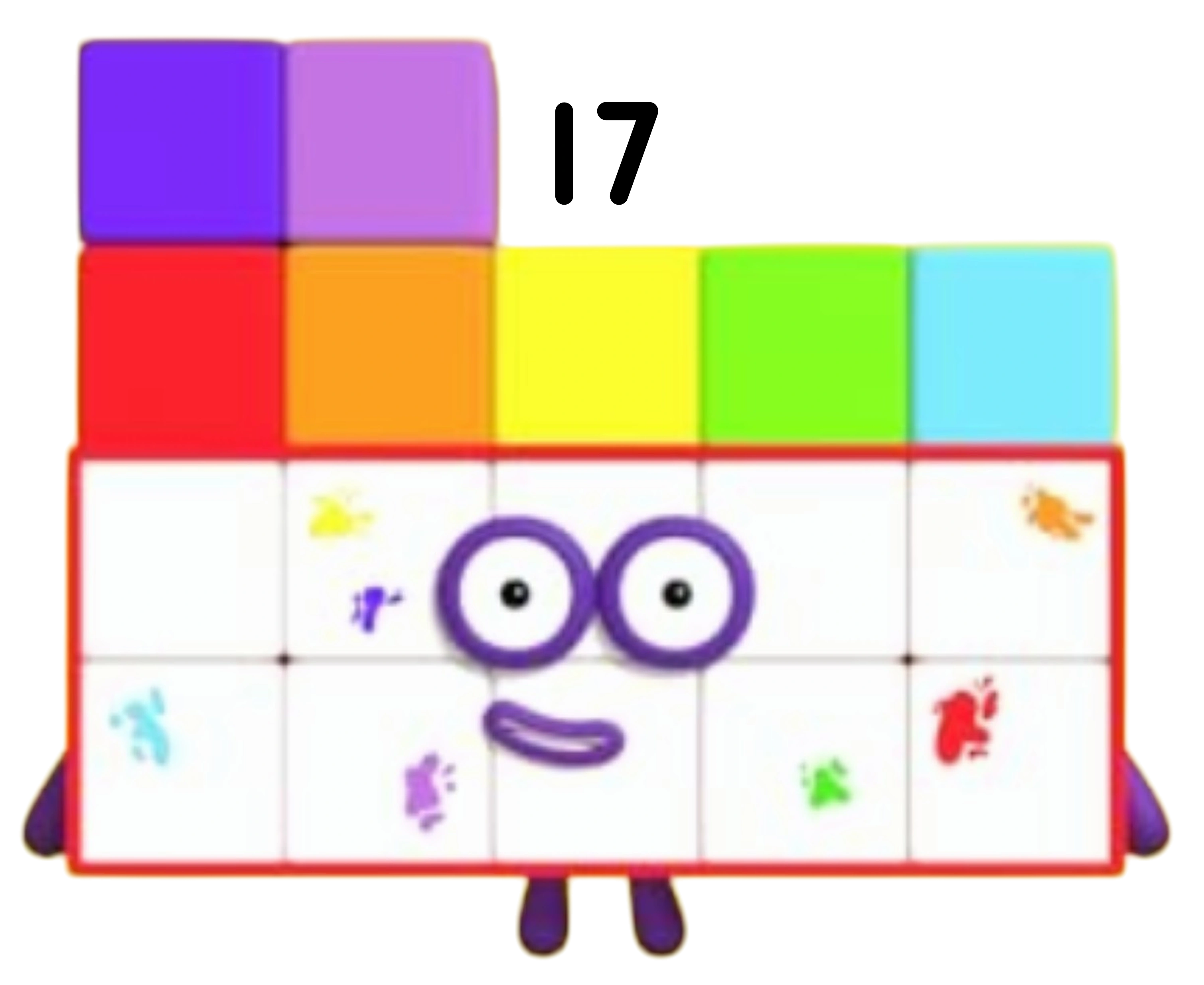
![17excitedtable.jpg (16 KB) Large Sideways E (10+1[>6]1[>]1+1[>8]1)](https://static.wikia.nocookie.net/numberblocks/images/7/72/17excitedtable.jpg/revision/latest/scale-to-width-down/95?cb=20240221231821)
















![18arrangement4.JPG (16 KB) 4[>2]5+9CR](https://static.wikia.nocookie.net/numberblocks/images/d/d3/18arrangement4.JPG/revision/latest/scale-to-width-down/95?cb=20190618072234)

















![IMG 20190622 094604 506.JPG (17 KB) 1[>]1+(3x2)C+5+3C+(1x2)C](https://static.wikia.nocookie.net/numberblocks/images/f/fa/IMG_20190622_094604_506.JPG/revision/latest/scale-to-width-down/63?cb=20190622084724)







![18gap.PNG (168 KB) Mind the gap (3[>6]3+12)](https://static.wikia.nocookie.net/numberblocks/images/2/27/18gap.PNG/revision/latest/scale-to-width-down/95?cb=20190708123640)




















![Newarr24.PNG (102 KB) 2[>12]2+14C](https://static.wikia.nocookie.net/numberblocks/images/c/ce/Newarr24.PNG/revision/latest/scale-to-width-down/95?cb=20210322133124)




![18missedarrangement.PNG (90 KB) 4L+4[>2]2+8](https://static.wikia.nocookie.net/numberblocks/images/a/a8/18missedarrangement.PNG/revision/latest/scale-to-width-down/95?cb=20210722090722)
![Newarr66.PNG (457 KB) (2[>]2)L+4[>2]2+8](https://static.wikia.nocookie.net/numberblocks/images/7/77/Newarr66.PNG/revision/latest/scale-to-width-down/95?cb=20210323002627)




![18hookarr.png (141 KB) Sideways Hook (4L+(1x3)c4+((1[>5]1)x2)c4+7c4)](https://static.wikia.nocookie.net/numberblocks/images/b/b2/18hookarr.png/revision/latest/scale-to-width-down/95?cb=20211103090138)
![18-24 w holes.jpg (160 KB) Totally Zero (4+1[>2]1+1[>]2+2[>]1+1[>2]1+4)](https://static.wikia.nocookie.net/numberblocks/images/2/2a/18-24_w_holes.jpg/revision/latest/scale-to-width-down/65?cb=20240217233240)
![Octodecimal.jpg (133 KB) Totally Ten (1c2+2[>]3+((1[>]1[>]1)x2)R+6)](https://static.wikia.nocookie.net/numberblocks/images/b/b3/Octodecimal.jpg/revision/latest/scale-to-width-down/95?cb=20240221231946)
![18-squareWlegs.jpg (78 KB) (4x4)+1[>2]1](https://static.wikia.nocookie.net/numberblocks/images/9/90/18-squareWlegs.jpg/revision/latest/scale-to-width-down/77?cb=20240303093831)








![SHES REALLY QOOT THO.png (80 KB) Monster (1[>5]1+7+5C+3C+(1[>]1)C)](https://static.wikia.nocookie.net/numberblocks/images/d/d5/SHES_REALLY_QOOT_THO.png/revision/latest/scale-to-width-down/95?cb=20190610141115)







![759C3E33-128F-4383-A788-3EDC5B2B5615.jpeg (203 KB) Teapot ((2[>2]2)R+4[>]1+6L+4L)](https://static.wikia.nocookie.net/numberblocks/images/2/21/759C3E33-128F-4383-A788-3EDC5B2B5615.jpeg/revision/latest/scale-to-width-down/95?cb=20190617131703)


![Man.JPG (17 KB) Man ((1x2)C+5+1[>]1[>]1+(1x2)C+5+1[>3]1)](https://static.wikia.nocookie.net/numberblocks/images/e/e6/Man.JPG/revision/latest/scale-to-width-down/85?cb=20190617171355)
![Dog.JPG (23 KB) Cool Centipede (13+(1[>]1[>]1[>]1[>]1[>]1)C)](https://static.wikia.nocookie.net/numberblocks/images/c/c9/Dog.JPG/revision/latest/scale-to-width-down/95?cb=20190617172438)
![Cowboy.JPG (13 KB) Cowboy ((3x2)C+5+(2[>]2)x2)](https://static.wikia.nocookie.net/numberblocks/images/0/0b/Cowboy.JPG/revision/latest/scale-to-width-down/79?cb=20190617172627)

![Uhhhhhhh.png (204 KB) Whatchamacallit ((1x2)c3+4L+3c3+5c4+(1[>2]1)c5+1c5+2c5)](https://static.wikia.nocookie.net/numberblocks/images/0/0b/Uhhhhhhh.png/revision/latest/scale-to-width-down/91?cb=20190618094656)
![ILLUSION.png (83 KB) Spiral (4L+1[>2]1[>]1+1[>]2[>]1+1[>4]1+6)](https://static.wikia.nocookie.net/numberblocks/images/c/c3/ILLUSION.png/revision/latest/scale-to-width-down/95?cb=20190618095212)
![DessertCactus.png (139 KB) Cactus (1[>]1[>]1+5+1C+1[>]1[>]1+5+(1x2)C)](https://static.wikia.nocookie.net/numberblocks/images/8/85/DessertCactus.png/revision/latest/scale-to-width-down/71?cb=20190618104054)



![Hmmmmmmmmmmmmmmmmmmmmm.png (115 KB) Carrot (2CL+1C+2CR+5R+(3[>2]1)R+3L+2L)](https://static.wikia.nocookie.net/numberblocks/images/9/9a/Hmmmmmmmmmmmmmmmmmmmmm.png/revision/latest/scale-to-width-down/81?cb=20190618104516)


![19'sface.JPG (22 KB) Weird Thing (1C+(1[>]1)R+5+(1[>]2)L+(2x8)CR)](https://static.wikia.nocookie.net/numberblocks/images/5/5e/19%27sface.JPG/revision/latest/scale-to-width-down/67?cb=20190618082222)
![IMG 20190618 204800 408.jpg (31 KB) 8-Bit Man ((3x3)C+5+3C+(1[>]1)C)](https://static.wikia.nocookie.net/numberblocks/images/d/d2/IMG_20190618_204800_408.jpg/revision/latest/scale-to-width-down/69?cb=20190618194919)


![IMG 20190618 201205 208.jpg (37 KB) Elephant (3C+5C+(4[>]1)L+1[>2]1[>]2+(1[>2]1))](https://static.wikia.nocookie.net/numberblocks/images/8/85/IMG_20190618_201205_208.jpg/revision/latest/scale-to-width-down/95?cb=20190618200259)

![IMG 20190618 204600 177.jpg (35 KB) Lightbulb (3C+2[>]2+(1[>3]1)x2+2[>]2+3C+1C)](https://static.wikia.nocookie.net/numberblocks/images/9/92/IMG_20190618_204600_177.jpg/revision/latest/scale-to-width-down/64?cb=20190618200523)
![IMG 20190618 201221 431.jpg (33 KB) Weird Container (2CL+5L+1[>2]3+((1[>2]1)x2)L+4L)](https://static.wikia.nocookie.net/numberblocks/images/c/c3/IMG_20190618_201221_431.jpg/revision/latest/scale-to-width-down/78?cb=20190618200322)
![IMG 20190619 162226 365.jpg (42 KB) Weird Vessel with Legs (3C+3[>]3+(1[>]1[>]1)C+5C+(1[>]1)C)](https://static.wikia.nocookie.net/numberblocks/images/6/69/IMG_20190619_162226_365.jpg/revision/latest/scale-to-width-down/95?cb=20190619153047)
![IMG 20190617 181302 825.jpg (34 KB) Stand (3C+5+3C+1C+3C+2[>]2)](https://static.wikia.nocookie.net/numberblocks/images/5/55/IMG_20190617_181302_825.jpg/revision/latest/scale-to-width-down/82?cb=20190617193458)

![IMG 20190619 170156 585.JPG (40 KB) Bubble Blower / Stupid Face (5+(1[>3]1)x4+5+1C)](https://static.wikia.nocookie.net/numberblocks/images/8/81/IMG_20190619_170156_585.JPG/revision/latest/scale-to-width-down/83?cb=20190620063956)
![IMG 20190619 162728 994.JPG (37 KB) Giraffe (2R+(1x7)CR+6L+((1[>4]1)x2)L)](https://static.wikia.nocookie.net/numberblocks/images/9/9a/IMG_20190619_162728_994.JPG/revision/latest/scale-to-width-down/57?cb=20190620064115)
![IMG 20190619 162654 103.jpg (39 KB) Umbrella (9+(1x5)C+(1[>1]CR+3CR)](https://static.wikia.nocookie.net/numberblocks/images/4/40/IMG_20190619_162654_103.jpg/revision/latest/scale-to-width-down/95?cb=20190619191300)
![19umbrella.png (199 KB) Umbrella 2 (7+1[>2]1[>2]1+(1x4)C+(1[>]1)CR+3CR)](https://static.wikia.nocookie.net/numberblocks/images/8/89/19umbrella.png/revision/latest/scale-to-width-down/84?cb=20211025231245)
![IMG 20190620 074501 999.JPG (52 KB) Table (9+8L+(1[>6]1)L)](https://static.wikia.nocookie.net/numberblocks/images/5/56/IMG_20190620_074501_999.JPG/revision/latest/scale-to-width-down/95?cb=20190620064634)





![IMG 20190622 071141 183.JPG (15 KB) Weird Fork ((1[>]1)C+3C+5+3+(1x6)C)](https://static.wikia.nocookie.net/numberblocks/images/9/99/IMG_20190622_071141_183.JPG/revision/latest/scale-to-width-down/44?cb=20190622062002)


![IMG 20190617 180155 992.jpg (22 KB) Horse (1CL+5R+2C+5R+4L+(1[>2]1)L)](https://static.wikia.nocookie.net/numberblocks/images/5/50/IMG_20190617_180155_992.jpg/revision/latest/scale-to-width-down/95?cb=20190617185137)
![IMG 20190625 195618 479.JPG (17 KB) Beast with Horns ([>]1[>3]1[>]x3+7+(3x2)C)](https://static.wikia.nocookie.net/numberblocks/images/b/b7/IMG_20190625_195618_479.JPG/revision/latest/scale-to-width-down/89?cb=20190626162728)
![IMG 20190619 162627 572.jpg (31 KB) Crumbly Cactus (5+1[>]1[>]1+(1x2)C+2CR+(2[>]1)R+2R+1C)](https://static.wikia.nocookie.net/numberblocks/images/0/07/IMG_20190619_162627_572.jpg/revision/latest/scale-to-width-down/51?cb=20190619191118)
![IMG 20190619 162255 874.jpg (25 KB) Pointing Up (1L+1[>2]1+4+(2x6)C)](https://static.wikia.nocookie.net/numberblocks/images/f/f2/IMG_20190619_162255_874.jpg/revision/latest/scale-to-width-down/39?cb=20190619190849)








![IMG 20190629 074549 914.JPG (13 KB) 1R+6+2R+6+((2[>]2)x2)R](https://static.wikia.nocookie.net/numberblocks/images/9/9e/IMG_20190629_074549_914.JPG/revision/latest/scale-to-width-down/89?cb=20190630085639)



![IMG 20190630 095937 236.JPG (23 KB) Horse Facing Left (1CR+5L+2C+5L+4R+(1[>2]1)R)](https://static.wikia.nocookie.net/numberblocks/images/6/6c/IMG_20190630_095937_236.JPG/revision/latest/scale-to-width-down/95?cb=20190630085948)










![IMG 20190630 100824 365.JPG (49 KB) Loaded Table (1c5+2C+(6x2)C+2[>4]2)](https://static.wikia.nocookie.net/numberblocks/images/8/86/IMG_20190630_100824_365.JPG/revision/latest/scale-to-width-down/95?cb=20190630091943)







![IMG 20190619 170453 301.JPG (38 KB) Sandcastle with a Hole (1[>2]1[>]1+6+(1[>4]1)x2+6)](https://static.wikia.nocookie.net/numberblocks/images/3/36/IMG_20190619_170453_301.JPG/revision/latest/scale-to-width-down/95?cb=20190630092223)
![IMG 20190619 170318 132.JPG (32 KB) 1C+1[>]1[>]1+5+((1[>2]1)x3)R+4R](https://static.wikia.nocookie.net/numberblocks/images/3/3b/IMG_20190619_170318_132.JPG/revision/latest/scale-to-width-down/80?cb=20190630092315)


![IMG 20190619 170047 180.JPG (31 KB) Claw-Thing (2L+1L+1[>2]1+4+(2x5)L)](https://static.wikia.nocookie.net/numberblocks/images/7/78/IMG_20190619_170047_180.JPG/revision/latest/scale-to-width-down/54?cb=20190630092410)
![IMG 20190619 170004 736.JPG (32 KB) 1L+1[>4]1+6+(1x2)CR+(2x4)C](https://static.wikia.nocookie.net/numberblocks/images/f/fa/IMG_20190619_170004_736.JPG/revision/latest/scale-to-width-down/69?cb=20190630092424)







![Horse.PNG (160 KB) Horse 2 (1CR+2R+1CR+6L+5C+((1[>3]1)x2)C)](https://static.wikia.nocookie.net/numberblocks/images/5/58/Horse.PNG/revision/latest/scale-to-width-down/93?cb=20190708123212)

![Plantpot.PNG (174 KB) Plant Pot (1C+1[>]1[>]1+5+1C+(3x3)C)](https://static.wikia.nocookie.net/numberblocks/images/4/4f/Plantpot.PNG/revision/latest/scale-to-width-down/77?cb=20190708123422)









![IMG 20190708 171044 419.JPG (2 KB) Short Hollow Tree (2[>]2+5+1[>3]1+5+(1x3)C)](https://static.wikia.nocookie.net/numberblocks/images/9/95/IMG_20190708_171044_419.JPG/revision/latest?cb=20190708170118)
![IMG 20190708 171101 191.JPG (4 KB) Lamp Post (1C+1[>]1[>]1+5+(1x10)C)](https://static.wikia.nocookie.net/numberblocks/images/6/6a/IMG_20190708_171101_191.JPG/revision/latest/scale-to-width-down/41?cb=20190708170128)


![Squats man.PNG (71 KB) Man Doing Squats (1C+1[>]1[>]1+5+(1x3)C+5+1[>3]1)](https://static.wikia.nocookie.net/numberblocks/images/c/cd/Squats_man.PNG/revision/latest/scale-to-width-down/62?cb=20240205130153)


![IMG 20190708 173619 491.JPG (34 KB) 5+2[>]2+1[>3]1+2[>]2+3C+1C](https://static.wikia.nocookie.net/numberblocks/images/b/be/IMG_20190708_173619_491.JPG/revision/latest/scale-to-width-down/71?cb=20190708170834)




![IMG 20190715 080258 756.JPG (30 KB) Teapot 2 (2c2+4[>]2+6L+5L)](https://static.wikia.nocookie.net/numberblocks/images/f/f0/IMG_20190715_080258_756.JPG/revision/latest/scale-to-width-down/95?cb=20190729120057)


![Bandicam 2021-03-22 20-58-38-749.png (55 KB) Door (5+(1[>3]1)x7)](https://static.wikia.nocookie.net/numberblocks/images/1/19/Bandicam_2021-03-22_20-58-38-749.png/revision/latest/scale-to-width-down/39?cb=20210322200002)

C+3[B(1, 0)]1x1x2)](https://static.wikia.nocookie.net/numberblocks/images/8/8a/3dcrane.PNG/revision/latest/scale-to-width-down/45?cb=20210425044632)







![Donutthingg20.PNG (73 KB) Square with a Hole (6+(1[>4]1)x4+6)](https://static.wikia.nocookie.net/numberblocks/images/4/4e/Donutthingg20.PNG/revision/latest/scale-to-width-down/95?cb=20210621132846)









![IMG-2337.jpg (140 KB) Ten Lifting Fives (1[>2]1+4x4+2C)](https://static.wikia.nocookie.net/numberblocks/images/0/07/IMG-2337.jpg/revision/latest/scale-to-width-down/75?cb=20210614132544)
![IMG-2338.jpg (165 KB) Ten Lifting Fives 2 ((1[>2]1)x3+4x2+(2x3)C)](https://static.wikia.nocookie.net/numberblocks/images/c/c0/IMG-2338.jpg/revision/latest/scale-to-width-down/61?cb=20210614132618)
![IMG-2339.jpg (173 KB) Ten Lifting Fives 3 ((1[>2]1)x4+4+(2x8)C)](https://static.wikia.nocookie.net/numberblocks/images/7/7b/IMG-2339.jpg/revision/latest/scale-to-width-down/52?cb=20210614132504)
![Static-assets-upload11728684835285648156.jpg (36 KB) Broken Rectangle (2R+2[>]1+4x2+2[>]1+4)](https://static.wikia.nocookie.net/numberblocks/images/d/d0/Static-assets-upload11728684835285648156.jpg/revision/latest/scale-to-width-down/95?cb=20210923011010)
![Arrbc20.PNG (40 KB) Egg (2C+4+(1[>2]1)x2+4x2+2C)](https://static.wikia.nocookie.net/numberblocks/images/5/50/Arrbc20.PNG/revision/latest/scale-to-width-down/62?cb=20220911094118)



![Compound7x3.PNG (81 KB) Lopsided Rectangle with a Hole (7+(3[>]3)C+7)](https://static.wikia.nocookie.net/numberblocks/images/1/10/Compound7x3.PNG/revision/latest/scale-to-width-down/95?cb=20210317235738)
![3x7comp.PNG (79 KB) Rectangle with a Hole (3x3+1[>]1+3x3)](https://static.wikia.nocookie.net/numberblocks/images/0/01/3x7comp.PNG/revision/latest/scale-to-width-down/72?cb=20210317235755)

![IMG 20190805 072917 885.JPG (11 KB) Two Squares on a Rectangle (2CL+(2[>]1)R+5x3)](https://static.wikia.nocookie.net/numberblocks/images/c/cb/IMG_20190805_072917_885.JPG/revision/latest/scale-to-width-down/95?cb=20190805064423)
![IMG 20190805 072944 504.JPG (12 KB) Big Ben (1CR+(3x2)R+(1[>]1)R+3R+4x2)](https://static.wikia.nocookie.net/numberblocks/images/1/16/IMG_20190805_072944_504.JPG/revision/latest/scale-to-width-down/52?cb=20190805064412)
![20WUT.PNG (61 KB) Rectangle with a Hole 2 (3x2+1[>]1+3x4)](https://static.wikia.nocookie.net/numberblocks/images/c/c7/20WUT.PNG/revision/latest/scale-to-width-down/60?cb=20210318000157)
![20DOUBWUT.PNG (144 KB) Dented Rectangle (1[>]1+3x6)](https://static.wikia.nocookie.net/numberblocks/images/0/06/20DOUBWUT.PNG/revision/latest/scale-to-width-down/52?cb=20210920224633)
















![Newarr53.PNG (185 KB) 1L+(1[>]1)x2+3x5](https://static.wikia.nocookie.net/numberblocks/images/f/f6/Newarr53.PNG/revision/latest/scale-to-width-down/54?cb=20210323002620)

![Newarr55.PNG (187 KB) 3x2+(1[>]1)x4+3x2](https://static.wikia.nocookie.net/numberblocks/images/1/11/Newarr55.PNG/revision/latest/scale-to-width-down/62?cb=20210323002621)

![Newarr57.PNG (170 KB) 1R+1[>]2+4x4](https://static.wikia.nocookie.net/numberblocks/images/6/61/Newarr57.PNG/revision/latest/scale-to-width-down/80?cb=20210323002622)


![Newarr68.PNG (148 KB) 3L+4[>2]1+7+5C](https://static.wikia.nocookie.net/numberblocks/images/2/28/Newarr68.PNG/revision/latest/scale-to-width-down/95?cb=20210323002628)




![Newarr75.PNG (152 KB) 8+2[>4]2+8](https://static.wikia.nocookie.net/numberblocks/images/3/3c/Newarr75.PNG/revision/latest/scale-to-width-down/95?cb=20210323004251)
![Newarr76.PNG (182 KB) 2[>]5+2[>3]3+8](https://static.wikia.nocookie.net/numberblocks/images/7/79/Newarr76.PNG/revision/latest/scale-to-width-down/95?cb=20210323004251)
![Newarr77.PNG (193 KB) (2[>3]1)L+2[>]6+9](https://static.wikia.nocookie.net/numberblocks/images/b/bc/Newarr77.PNG/revision/latest/scale-to-width-down/95?cb=20210323004251)





![Newarr84.PNG (79 KB) Volcano (1C+(1[>]1)c5+(2[>]1)c4+(3[>]2)CR+9)](https://static.wikia.nocookie.net/numberblocks/images/7/7e/Newarr84.PNG/revision/latest/scale-to-width-down/95?cb=20210323004253)






![C140D911-7DD1-4054-A819-61082166D748.jpeg (162 KB) Face (5+1[>]1[>]1+5+1[>3]1+5)](https://static.wikia.nocookie.net/numberblocks/images/4/4a/C140D911-7DD1-4054-A819-61082166D748.jpeg/revision/latest/scale-to-width-down/93?cb=20210830172109)
![3 by 9.png (123 KB) 3+(1[>]1)x7+3](https://static.wikia.nocookie.net/numberblocks/images/b/bc/3_by_9.png/revision/latest/scale-to-width-down/49?cb=20210322161251)


L[B]3+(2x2)L)](https://static.wikia.nocookie.net/numberblocks/images/3/3c/Bandicam_2021-03-22_19-18-03-886.png/revision/latest/scale-to-width-down/95?cb=20210322181901)
![Satenar3.png (57 KB) Odd Cuboid (2x3[B(0,1)][1L+2x3]x2)](https://static.wikia.nocookie.net/numberblocks/images/3/3c/Satenar3.png/revision/latest/scale-to-width-down/54?cb=20210607110207)



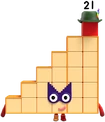







![IMG 20190805 075740 007.JPG (9 KB) (2x6)L+1[>]1+3+(2x2)L](https://static.wikia.nocookie.net/numberblocks/images/c/c9/IMG_20190805_075740_007.JPG/revision/latest/scale-to-width-down/51?cb=20190805070335)
![IMG 20190805 075801 643.JPG (8 KB) (2x5)L+3+1[>]1+(2x3)L](https://static.wikia.nocookie.net/numberblocks/images/e/ed/IMG_20190805_075801_643.JPG/revision/latest/scale-to-width-down/48?cb=20190805070325)





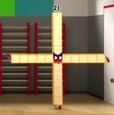
![2019-08-11 (2).png (118 KB) Square with a Hole (5+((1[2>]2)x2)+5x2)](https://static.wikia.nocookie.net/numberblocks/images/d/d2/2019-08-11_%282%29.png/revision/latest/scale-to-width-down/115?cb=20190812062554)
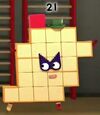
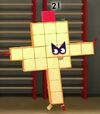




![Captain hexbeard.png (350 KB) Captain Hexbeard / Jack-o'-Lantern (1C+5+1[>]1[>]1+5+1[>3]1+5)](https://static.wikia.nocookie.net/numberblocks/images/6/61/Captain_hexbeard.png/revision/latest/scale-to-width-down/110?cb=20210827104314)

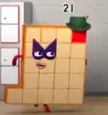
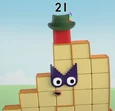

![Static-assets-upload207270639035560545.jpg (36 KB) 1C+(3x2)C+5+1[>]3+5](https://static.wikia.nocookie.net/numberblocks/images/7/7a/Static-assets-upload207270639035560545.jpg/revision/latest/scale-to-width-down/90?cb=20210827090604)
![Static-assets-upload10117012672055398299.jpg (40 KB) (1[>]1)C+2[>]2+(3x5)C](https://static.wikia.nocookie.net/numberblocks/images/8/8b/Static-assets-upload10117012672055398299.jpg/revision/latest/scale-to-width-down/87?cb=20210827090606)

![Static-assets-upload14805001729421631507.jpg (38 KB) (1[>3]1)x2+5+(3x4)C](https://static.wikia.nocookie.net/numberblocks/images/6/68/Static-assets-upload14805001729421631507.jpg/revision/latest/scale-to-width-down/93?cb=20210827090606)

![Static-assets-upload3362181374678500338.jpg (41 KB) 2[>]2+(1[>]1)C+(3x5)C](https://static.wikia.nocookie.net/numberblocks/images/5/5f/Static-assets-upload3362181374678500338.jpg/revision/latest/scale-to-width-down/83?cb=20210827090606)
![Static-assets-upload4696574845211815121.jpg (46 KB) 4+(1[>]1)R+(3x5)R](https://static.wikia.nocookie.net/numberblocks/images/8/82/Static-assets-upload4696574845211815121.jpg/revision/latest/scale-to-width-down/67?cb=20210827090607)
![Static-assets-upload6288574811182586306.jpg (37 KB) 1C+(1[>]1[>]1)x2+5+1[>]3+5](https://static.wikia.nocookie.net/numberblocks/images/3/3c/Static-assets-upload6288574811182586306.jpg/revision/latest/scale-to-width-down/92?cb=20210827090607)
![Static-assets-upload8165747146962040324.jpg (36 KB) 1[>3]1+5x2+(3x3)C](https://static.wikia.nocookie.net/numberblocks/images/0/0e/Static-assets-upload8165747146962040324.jpg/revision/latest/scale-to-width-down/96?cb=20210827090607)









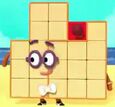





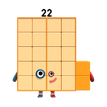

![Newarr8.PNG (380 KB) Horned Rectangle (1[>2]1+4x4+(2x2)C)](https://static.wikia.nocookie.net/numberblocks/images/6/63/Newarr8.PNG/revision/latest/scale-to-width-down/70?cb=20210322131511)




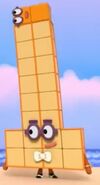


![22mumbojumbo.jpg (44 KB) Moustached Face (6+1[>]2[>]1+6+(1[>2]1)C+4C)](https://static.wikia.nocookie.net/numberblocks/images/1/1f/22mumbojumbo.jpg/revision/latest/scale-to-width-down/185?cb=20240221232116)
![22cat.jpg (62 KB) Cat (2L+((1[>3]2)x2)R+(5x2)C+((1[>3]1)x2)C)](https://static.wikia.nocookie.net/numberblocks/images/7/76/22cat.jpg/revision/latest/scale-to-width-down/185?cb=20240303093831)


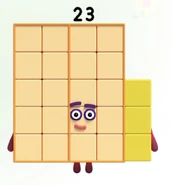


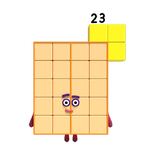
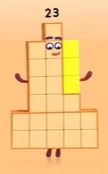

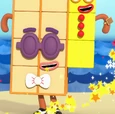





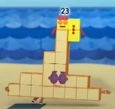


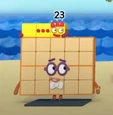





![Newarr68.PNG (148 KB) 5L+5[>]1+7+5C](https://static.wikia.nocookie.net/numberblocks/images/2/28/Newarr68.PNG/revision/latest/scale-to-width-down/115?cb=20210323002628)













![Dountthingg24.PNG (94 KB) Square with a Hole (7+(1[>5]1)x5+7)](https://static.wikia.nocookie.net/numberblocks/images/f/f9/Dountthingg24.PNG/revision/latest/scale-to-width-down/115?cb=20210621132847)
![24squarewithhole.png (564 KB) Square with a Hole 2 (5x2+2[>]2+5x2)](https://static.wikia.nocookie.net/numberblocks/images/4/47/24squarewithhole.png/revision/latest/scale-to-width-down/115?cb=20220214150504)
![Arrangement 24.png (107 KB) Broken Rectangle 1 (2R+(1[>]2)x2+4+(3x4)R)](https://static.wikia.nocookie.net/numberblocks/images/d/da/Arrangement_24.png/revision/latest/scale-to-width-down/53?cb=20210322135141)


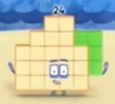
![Aaaaaaaaaaaaaabbbbbbbbbbbbbbbbcccccccccccc.jpg (41 KB) Waves (3R+2[>2]2+6x2+5L)](https://static.wikia.nocookie.net/numberblocks/images/9/9e/Aaaaaaaaaaaaaabbbbbbbbbbbbbbbbcccccccccccc.jpg/revision/latest/scale-to-width-down/115?cb=20210322231710)
![Aaaaaabbbbbcccccddddd.jpg (43 KB) Bunny with a Missing Block ((1[>5]1)x2+7x2+6L)](https://static.wikia.nocookie.net/numberblocks/images/1/13/Aaaaaabbbbbcccccddddd.jpg/revision/latest/scale-to-width-down/115?cb=20210322231734)
![Newarr90.PNG (173 KB) 6[>3]6+(10[>2]2)R](https://static.wikia.nocookie.net/numberblocks/images/b/b1/Newarr90.PNG/revision/latest/scale-to-width-down/115?cb=20210323004255)
![33333.jpg (31 KB) 2[>19]1+21R](https://static.wikia.nocookie.net/numberblocks/images/5/53/33333.jpg/revision/latest/scale-to-width-down/115?cb=20210322231814)
![Newarr92.PNG (163 KB) 2[>18]2+20C](https://static.wikia.nocookie.net/numberblocks/images/3/3e/Newarr92.PNG/revision/latest/scale-to-width-down/115?cb=20210323004256)










![24wrenchthing.PNG (146 KB) Tall Hat on Helmet ((2x5)C+4x3+1[>2]1)](https://static.wikia.nocookie.net/numberblocks/images/0/07/24wrenchthing.PNG/revision/latest/scale-to-width-down/62?cb=20210323032634)
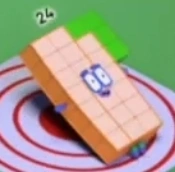
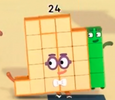

![24thing1.PNG (52 KB) 2c9+(6[>]2)c5+14](https://static.wikia.nocookie.net/numberblocks/images/4/44/24thing1.PNG/revision/latest/scale-to-width-down/115?cb=20210423072201)




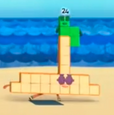





![Newarr81.PNG (42 KB) 8[>4]2+14](https://static.wikia.nocookie.net/numberblocks/images/b/bc/Newarr81.PNG/revision/latest/scale-to-width-down/115?cb=20210323004250)
![Newarr82.PNG (50 KB) 3[>16]1+20](https://static.wikia.nocookie.net/numberblocks/images/c/ce/Newarr82.PNG/revision/latest/scale-to-width-down/115?cb=20210323004250)
![Newarr83.PNG (40 KB) 4[>8]4+16](https://static.wikia.nocookie.net/numberblocks/images/b/b3/Newarr83.PNG/revision/latest/scale-to-width-down/115?cb=20210323004250)
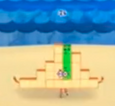



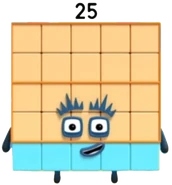


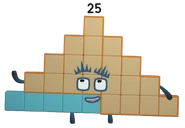
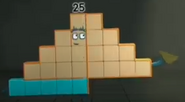
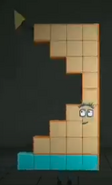

![25mug.jpg (64 KB) Coffee Mug (6L+1[>4]3+1[>4]1[>]1+1[>4]3+(1[>4]1)L+6L)](https://static.wikia.nocookie.net/numberblocks/images/9/92/25mug.jpg/revision/latest/scale-to-width-down/185?cb=20240220234514)
![25ablevel.jpg (68 KB) Giant Top Hat (5C+((1[>3]1)x2)C+5C+((1[>3]1)x2)C+7)](https://static.wikia.nocookie.net/numberblocks/images/a/ad/25ablevel.jpg/revision/latest/scale-to-width-down/185?cb=20240221232222)
![25giraffe.jpg (98 KB) Giraffe (3R+(1x6)CR+5L+((1[>3]1)x2)L+5L+(1[>3]1)L)](https://static.wikia.nocookie.net/numberblocks/images/4/4c/25giraffe.jpg/revision/latest/scale-to-width-down/113?cb=20240303093831)



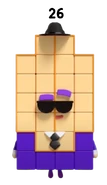
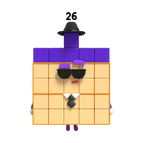













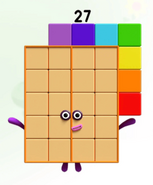

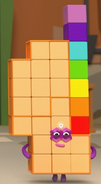
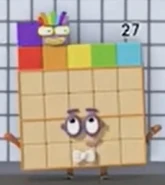
![Compound 27.png (149 KB) Alien-like Face with Ears ((1[>]1)C+5x2+1[>]1[>]1+5+1[>3]1+5)](https://static.wikia.nocookie.net/numberblocks/images/3/35/Compound_27.png/revision/latest/scale-to-width-down/169?cb=20210322161332)
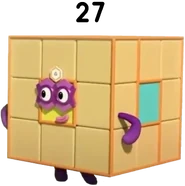
![S8splitarr2.PNG (88 KB) Piggyback (3x4[B(0,3)]3x5)](https://static.wikia.nocookie.net/numberblocks/images/1/14/S8splitarr2.PNG/revision/latest/scale-to-width-down/125?cb=20210607132456)


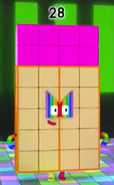
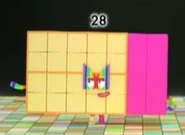


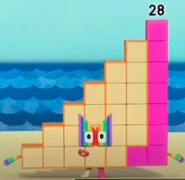

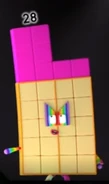
![Nbworld28.PNG (52 KB) Tower with Windows / Ladder (3+(1[>]1+3)x5)](https://static.wikia.nocookie.net/numberblocks/images/a/ae/Nbworld28.PNG/revision/latest/scale-to-width-down/65?cb=20210925033530)
![Swah .png (331 KB) Square Outline / Square with a Hole (8+(1[>6]1)x6+8)](https://static.wikia.nocookie.net/numberblocks/images/1/17/Swah_.png/revision/latest/scale-to-width-down/161?cb=20220622004809)
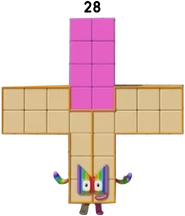
![28thecrazyshapeeeeeeeeee.png (84 KB) Stickman (3C+(1[>]1)C+3C+1C+5+1[>]1[>]1+(1x2)C+3C+(1[>]1)C+2[>]2)](https://static.wikia.nocookie.net/numberblocks/images/1/17/28thecrazyshapeeeeeeeeee.png/revision/latest/scale-to-width-down/91?cb=20210614092056)
![28 took breakdance lessons lol.png (69 KB) Splitting Stickman (3C+(1[>]1)C+3C+1C+7+(1x2)C+1[>2]1[>2]1+7)](https://static.wikia.nocookie.net/numberblocks/images/e/e8/28_took_breakdance_lessons_lol.png/revision/latest/scale-to-width-down/154?cb=20210614092054)
![HT28.jpg (36 KB) Rabbit Head (2[>]2+3C+1C+5+1[>]1[>]1+5+1[>3]1+5)](https://static.wikia.nocookie.net/numberblocks/images/a/a8/HT28.jpg/revision/latest/scale-to-width-down/104?cb=20210321190250)
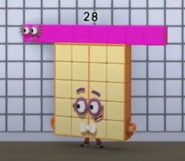
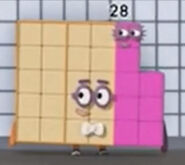
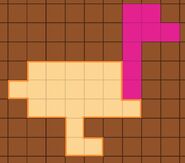

![28squareman.jpg (53 KB) (5x2)C+3[>]3+(5x2)C+(1[>3]1)C](https://static.wikia.nocookie.net/numberblocks/images/8/81/28squareman.jpg/revision/latest/scale-to-width-down/185?cb=20240303093831)


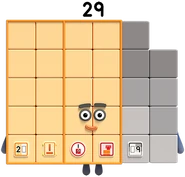


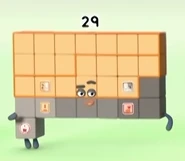
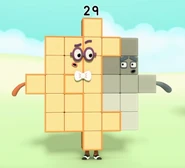
![Satenar5.png (113 KB) Two Poking Out (3x3[B(0,1)][1L+3x3]x2)](https://static.wikia.nocookie.net/numberblocks/images/e/e5/Satenar5.png/revision/latest/scale-to-width-down/166?cb=20210607110208)




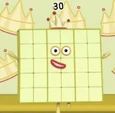



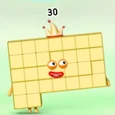
![IMG-2330.jpg (233 KB) Weird 4 ((1[>]2)L+6x3+(3x3)CL)](https://static.wikia.nocookie.net/numberblocks/images/7/77/IMG-2330.jpg/revision/latest/scale-to-width-down/101?cb=20210614131150)
![Arrbc30.PNG (72 KB) Stickman (5+1[>]1[>]1+5+1[>3]1+5+1C+3C+1C+3C+(1[>]1)C)](https://static.wikia.nocookie.net/numberblocks/images/9/90/Arrbc30.PNG/revision/latest/scale-to-width-down/61?cb=20220911094120)


![Aaaaaaaaaaaaaaaaaa030s8.jpg (142 KB) Rectangle With A Hole 1 (4+1[>2]1+4x6)](https://static.wikia.nocookie.net/numberblocks/images/f/f2/Aaaaaaaaaaaaaaaaaa030s8.jpg/revision/latest/scale-to-width-down/56?cb=20210608001242)
![Seightera9.jpg (175 KB) Rectangle With A Hole 2 (8+(6[>]1)x2+8)](https://static.wikia.nocookie.net/numberblocks/images/f/f9/Seightera9.jpg/revision/latest/scale-to-width-down/115?cb=20210607111802)
![31newarr.png (119 KB) Incomplete Outline (4[>2]3+(1[>7]1)x7+9)](https://static.wikia.nocookie.net/numberblocks/images/0/06/31newarr.png/revision/latest/scale-to-width-down/103?cb=20210607163704)




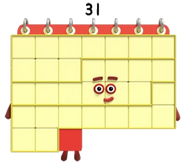

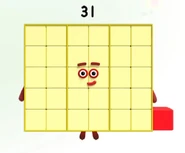
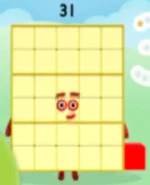








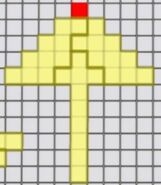
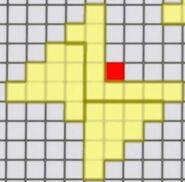


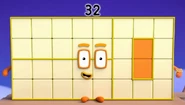


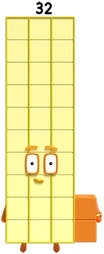

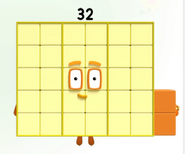
![Donutthingg32.PNG (53 KB) Square Outline (9+(1[>7]1)x7+9)](https://static.wikia.nocookie.net/numberblocks/images/6/6d/Donutthingg32.PNG/revision/latest?cb=20210621132846)



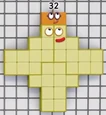


![Aaa034s8.jpg (44 KB) Square With Four Holes (6+1[>]2[>]1+6x2+1[>]2[>]1+6)](https://static.wikia.nocookie.net/numberblocks/images/b/b3/Aaa034s8.jpg/revision/latest/scale-to-width-down/185?cb=20210608001237)
![Aaa035s8.jpg (69 KB) Donut (2C+6C+(2[>2]2)C+(2[>4]2)x2+(2[>2]2)C+6C+2C)](https://static.wikia.nocookie.net/numberblocks/images/8/82/Aaa035s8.jpg/revision/latest/scale-to-width-down/185?cb=20210608001239)



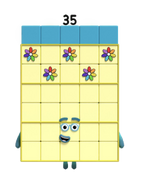
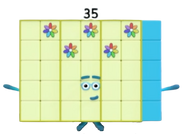







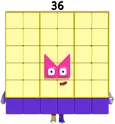




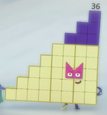




![36donut.jpeg (224 KB) Square Outline / Square with a Hole (10+(1[>8]1)x8+10)](https://static.wikia.nocookie.net/numberblocks/images/4/4a/36donut.jpeg/revision/latest/scale-to-width-down/107?cb=20210920151759)





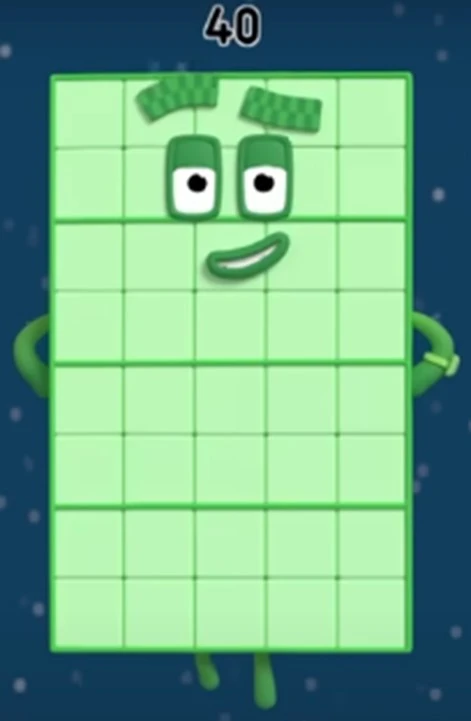
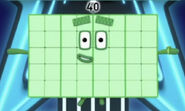





![Arrbc40.PNG (77 KB) (2x6)C+4C+6x2+(2[>2]2)x3](https://static.wikia.nocookie.net/numberblocks/images/b/be/Arrbc40.PNG/revision/latest/scale-to-width-down/108?cb=20220911094119)


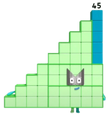
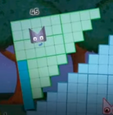







![Wththisapphassomanynewarrangements9.jpg (33 KB) Helicopter (9+1x2C+3C+(1[>5]5C)+13C+(1[>2]8)+3CL)](https://static.wikia.nocookie.net/numberblocks/images/5/58/Wththisapphassomanynewarrangements9.jpg/revision/latest/scale-to-width-down/115?cb=20240221133053)

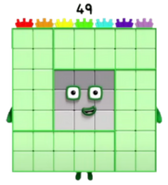
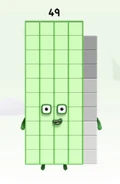



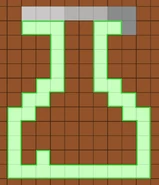


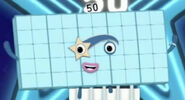
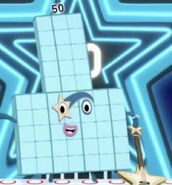
![NewFiftyArrangement.jpeg (397 KB) Vibrating Lines (((1[>]1[>]1[>]1[>]1)x2)R+10x3+((1[>]1[>]1[>]1[>]1)x2)L)](https://static.wikia.nocookie.net/numberblocks/images/f/f1/NewFiftyArrangement.jpeg/revision/latest/scale-to-width-down/185?cb=20211017003550)







![55transparent.png (71 KB) Rocket Ship ((1x8)C+(3x3)C+5x4+(2[>]2)x3+(1[>3]1)x3)](https://static.wikia.nocookie.net/numberblocks/images/a/ae/55transparent.png/revision/latest/scale-to-width-down/31?cb=20211003024242)
![55splitspaceship.PNG (19 KB) Shifted Rocket Ship ((1x8)C+(3x2)C+5x5+(2[>]2)x3+(1[>3]1)x2)](https://static.wikia.nocookie.net/numberblocks/images/5/56/55splitspaceship.PNG/revision/latest/scale-to-width-down/57?cb=20210624014828)


![55split5.PNG (104 KB) 1C+3C+5x9+2[>]2+1[>3]1](https://static.wikia.nocookie.net/numberblocks/images/9/92/55split5.PNG/revision/latest/scale-to-width-down/48?cb=20240117093412)
![55split6.PNG (114 KB) (1x7)C+(3x2)C+5x6+(2[>]2)x2+(1[>3]1)x2](https://static.wikia.nocookie.net/numberblocks/images/4/48/55split6.PNG/revision/latest/scale-to-width-down/37?cb=20240117093742)
![How did i miss this.PNG (40 KB) (1x6)C+(3x2)C+5x7+2[>]2+(1[>3]1)x2](https://static.wikia.nocookie.net/numberblocks/images/a/a0/How_did_i_miss_this.PNG/revision/latest/scale-to-width-down/46?cb=20220430035301)




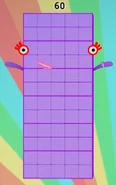
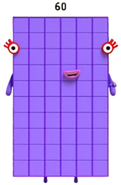
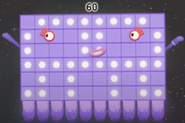

![60donut.png (214 KB) Rectangle with a Hole (20+(1[>18]1)x10+20](https://static.wikia.nocookie.net/numberblocks/images/4/41/60donut.png/revision/latest/scale-to-width-down/185?cb=20211014210944)

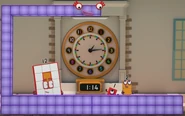
![60newarr2.png (540 KB) Incomplete Rectangular Outline / Wide C (20+(1[>18]1)x2+(1x7)L+9L+20)](https://static.wikia.nocookie.net/numberblocks/images/2/26/60newarr2.png/revision/latest/scale-to-width-down/185?cb=20211031111318)


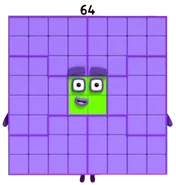
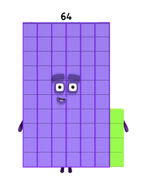

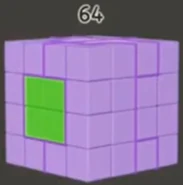

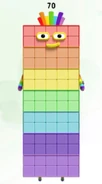
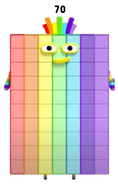
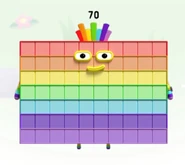



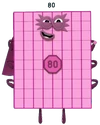
![Newarrangements2.PNG (227 KB) Roboctoblock (2C+4C+2C+10+(1[>]6[>]1)x4+(1[>3]2[>3]1)x2+1[>2]4[>2]1+4C+((1[>2]1)x2)C+((2[>2]2)x2)C)](https://static.wikia.nocookie.net/numberblocks/images/d/d9/Newarrangements2.PNG/revision/latest/scale-to-width-down/88?cb=20190812080819)
![Newarrangements3.PNG (274 KB) Shifted Robot (2C+4C+2C+10+(1[>]6[>]1)x4+1[>3]2[>3]1+(1[>2]4[>2]1)x2+4C+(1[>2]1)C+((2[>2]2)x2)C)](https://static.wikia.nocookie.net/numberblocks/images/1/1b/Newarrangements3.PNG/revision/latest/scale-to-width-down/102?cb=20190812080914)
![Newarrangements5.PNG (131 KB) Dinoctoblock (5c12+2c12+5c12+(3x2)c12+(4x2)c11+7c10+6c9+10c7+14L+7c8+6c9+((1[>3]1)x2)c10)](https://static.wikia.nocookie.net/numberblocks/images/1/16/Newarrangements5.PNG/revision/latest/scale-to-width-down/125?cb=20190812081026)
![Newarrangements6.PNG (156 KB) Dinoctoblock 2 (5L+2c4+5L+(3x2)c3+(4x2)c3+7L+6c3+10L+14c3+7c3+6c3+((1[>3]1)x2)c3)](https://static.wikia.nocookie.net/numberblocks/images/9/92/Newarrangements6.PNG/revision/latest/scale-to-width-down/125?cb=20190812081139)
![Tridonorspider.png (288 KB) Spidoctoblock ((2[>4]2)C+((1[>6]1)x2)C+1[>]1[>2]2[>2]1[>]1+1[>]8[>]1+1[>4]2[>4]1+12+2C+10C+(1[>3]2[>3]1)C+1[>]6[>]1+((1[>]1[>4]1[>]1)x2)C+((1[>4]1)x4)C)](https://static.wikia.nocookie.net/numberblocks/images/d/d0/Tridonorspider.png/revision/latest/scale-to-width-down/88?cb=20210621115153)
![ProudestSneezer.png (104 KB) Square with a Hole (9x4+4[>]4+9x4)](https://static.wikia.nocookie.net/numberblocks/images/2/24/ProudestSneezer.png/revision/latest/scale-to-width-down/118?cb=20210621123921)
